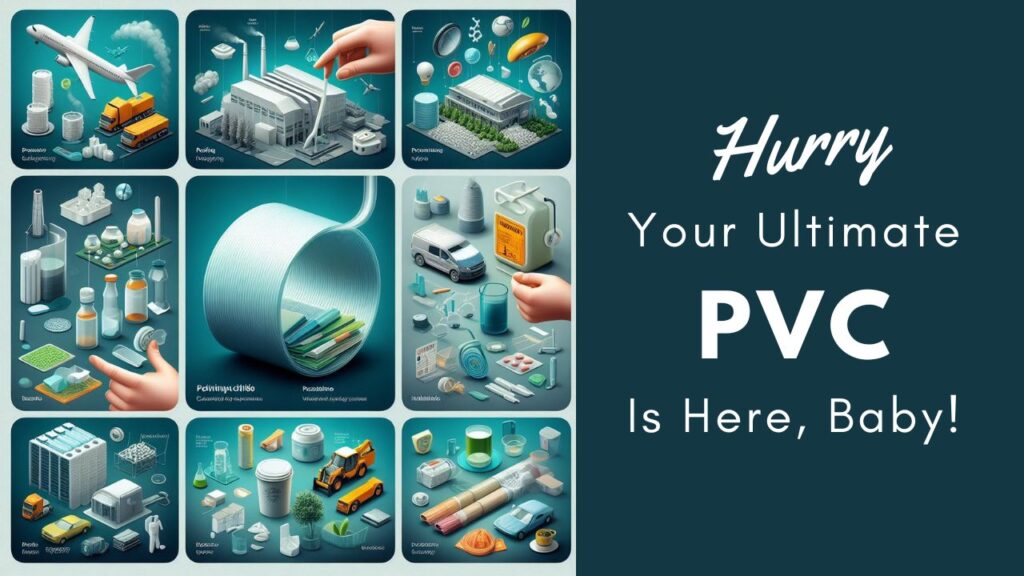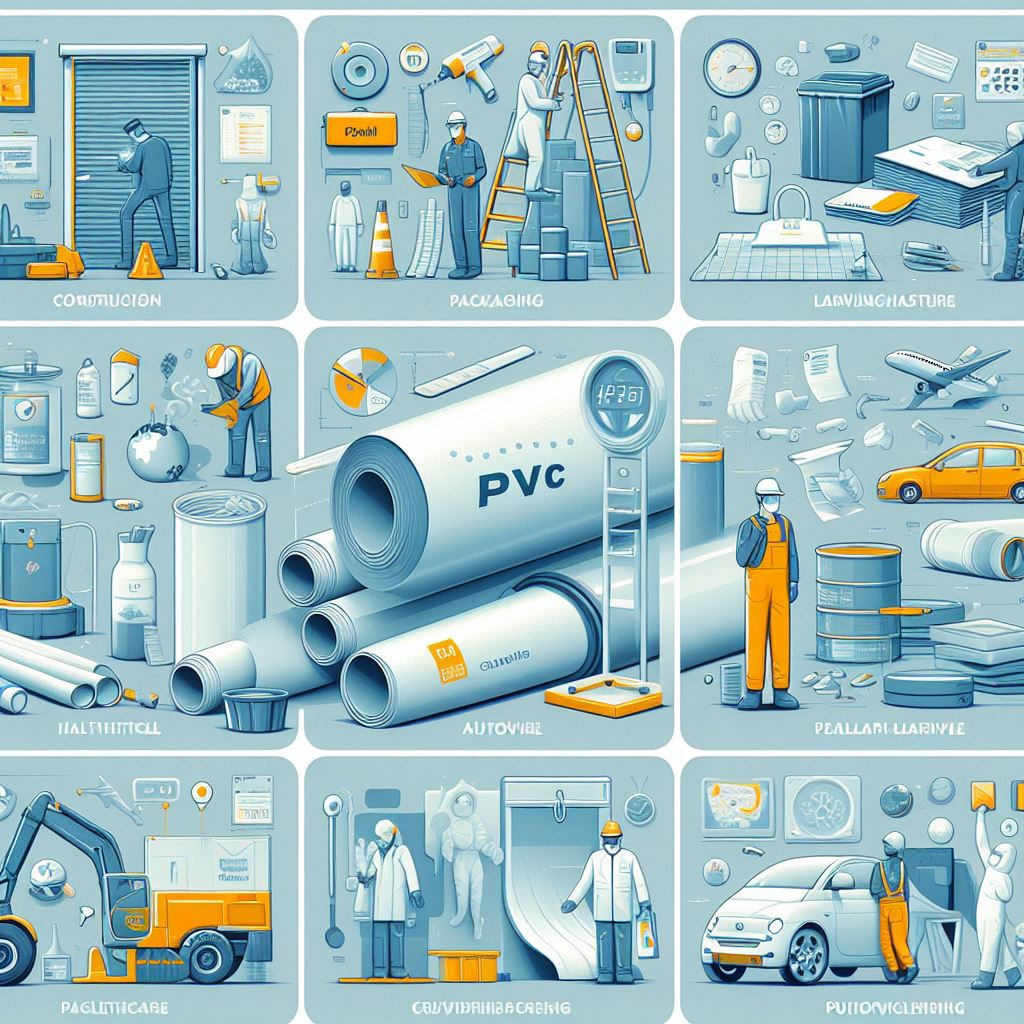Introduction to PVC and its Benefits
Polyvinyl Chloride, commonly known as PVC, stands as one of the most versatile and widely used synthetic polymers. Its popularity stems from a myriad of benefits that make it a go-to material in various industries. PVC is valued for its durability, chemical resistance, and cost-effectiveness, making it an ideal choice for applications ranging from construction to electrical systems, plumbing, and signage.
Types of PVC: Rigid, Flexible, and PVC Foam
Understanding the diverse nature of PVCs is essential for effective utilization. PVC comes in three primary forms: rigid, flexible, and PVC foam. Each type is tailored to specific applications based on their unique properties.
- Rigid PVC: Known for its robustness and structural integrity, rigid PVC is commonly used in construction, where strength and stability are paramount. It finds applications in pipes, fittings, window profiles, and other structural components.
- Flexible PVC: As the name suggests, flexible PVC is pliable and adaptable. This type is often employed in electrical wiring, healthcare equipment, and inflatable structures due to its flexibility and ease of molding.
- PVC Foam: Combining the characteristics of both rigid and flexible PVC, PVC foam offers a lightweight yet sturdy option. Its versatility makes it suitable for applications such as signage, displays, and insulation.
Manufacturing Process and Environmental Considerations
The production of PVC involves a polymerization process, where vinyl chloride monomers combine to form polymer chains. This process can be carried out through different methods, with suspension polymerization being the most common for PVC.
Despite its widespread use, PVC’s production raises environmental concerns. The manufacturing process releases chlorine gas and produces byproducts like dioxins. However, industry advancements and stringent regulations have led to improvements in minimizing these environmental impacts.
Applications of PVC in Various Industries
PVC’s adaptability makes it a staple in multiple industries:
- Construction: Polyvinyl chloride is extensively used in construction for pipes, window frames, flooring, and roofing materials.
- Plumbing: Its corrosion resistance and durability make PVC pipes a preferred choice for plumbing systems.
- Electrical: Flexible PVC is crucial in electrical applications, providing insulation for wires and cables.
- Signage: PVC’s lightweight and versatility make it an ideal material for signage, displays, and advertising boards.
Factors to Consider When Selecting PVC
Choosing the right type of Polyvinyl chloride involves considering several factors:
- Durability: Rigid PVC excels in durability, suitable for long-lasting applications.
- Chemical Resistance: PVC’s chemical resistance is crucial, especially in plumbing and industrial settings.
- Temperature Tolerance: Different grades of PVC exhibit varying temperature tolerances. Understanding application-specific requirements is vital.
- UV Stability: For outdoor applications, UV stability is essential to prevent degradation over time.
Sizes, Thicknesses, and Their Impact on Performance
The sizing and thickness of PVC components play a significant role in their performance. Thicker PVC may offer more strength, but the application and structural requirements must guide these choices. For example, in plumbing, the size of PVC pipes must be chosen based on the volume and pressure requirements of the system.
Storage, Handling, and Cutting Techniques for PVC
Proper storage and handling are crucial to maintaining Polyvinyl chloride quality. Polyvinyl chloride should be stored in a cool, dry place, away from direct sunlight. When handling Polyvinyl chloride, avoiding rough treatment and minimizing contact with oils and solvents helps prevent damage.
Cutting techniques vary based on the type of Polyvinyl chloride. Rigid PVC can be cut using saws or PVC cutters, while flexible PVC may require specialized cutting tools to maintain precision.
Installation Methods for PVC Pipes, Fittings, and Profiles
Installing PVC components requires precision and adherence to industry standards. For PVC pipes, proper alignment, solvent welding, and secure fittings are essential. Flexible Polyvinyl chloride may require different installation techniques, such as heat welding for seams in inflatable structures.
Safety Precautions and Best Practices for Working with PVC
While Polyvinyl chloride is generally safe to work with, certain precautions must be taken:
- Ventilation: Adequate ventilation is crucial, especially when using Polyvinyl chloride in confined spaces, to prevent inhalation of fumes during welding or cutting.
- Protective Gear: Depending on the application, wearing gloves and safety goggles is advisable to prevent skin contact and eye irritation.
- Avoidance of Combustion: Polyvinyl chloride should not be burned, as it releases toxic chlorine gas. Proper disposal methods should be followed instead.
Maintenance and Cleaning Tips for PVC Products
Maintaining PVC products is relatively simple:
- Cleaning Agents: Mild soap and water are usually sufficient for cleaning Polyvinyl chloride surfaces. Harsh chemicals should be avoided to prevent damage.
- Avoiding Abrasives: Scrubbing with abrasive materials can scratch and damage the surface of Polyvinyl chloride, so it’s best to use soft cloths or sponges.
- Regular Inspection: Periodic checks for wear, especially in outdoor applications, can help identify potential issues before they escalate.
Common Misconceptions about PVC and Debunking Them

Despite its widespread use, PVC is not immune to misconceptions:
- Not Environmentally Friendly: While Polyvinyl chloride production has environmental considerations, advancements in recycling and responsible manufacturing practices have improved its environmental profile.
- Unsafe for Health: Polyvinyl chloride is considered safe for most applications when used correctly. The concern arises primarily during manufacturing and disposal, where proper measures can mitigate risks.
Comparison of PVC with Other Materials Used in Similar Applications
Comparing Polyvinyl chloride with alternative materials like metal, wood, or other polymers is essential to make informed decisions based on the specific requirements of a project. Polyvinyl chloride often excels in terms of cost, durability, and versatility.
Case Studies Showcasing Successful PVC’s Projects
Examining real-world examples of successful Polyvinyl chloride applications can provide valuable insights into the material’s potential. For instance, the use of Polyvinyl chloride in large-scale construction projects or innovative applications in the automotive industry demonstrates its adaptability.
Regulations and Standards Related to PVC’s Usage
Adhering to industry regulations and standards is crucial for ensuring the quality and safety of PVC’s applications. Standards set by organizations like ASTM International and the International Organization for Standardization (ISO) guide the manufacturing and use of Polyvinyl chloride.
Innovative Uses of PVC’s in Emerging Industries
PVC’s versatility has led to innovative applications in emerging industries such as renewable energy, healthcare, and even fashion. Research and development continue to explore new ways to leverage PVC’s unique properties.
Recycling and Sustainability Initiatives for PVC
The recyclability of PVCs has been a subject of debate. While Polyvinyl chloride is recyclable, challenges arise due to the variety of additives used in its production. Initiatives for sustainable PVCs focus on improving recycling processes and reducing environmental impacts.
Troubleshooting Common Issues with PVC’s Installation or Usage
Issues like leaks in PVC pipes, misalignments in fittings, or surface damage can occur. Troubleshooting involves identifying the root cause and implementing corrective measures, which may include reinstallation or repairs.
Cost Considerations When Using PVC’s in Different Applications
PVC’s cost-effectiveness is one of its major advantages. Understanding the overall project budget and comparing it with the long-term benefits of PVCs helps in making informed decisions.
Future Trends and Advancements in PVC’s Technology
The future of PVCs holds promising developments, including enhanced recycling methods, novel applications, and improvements in manufacturing processes. Keeping an eye on these trends can guide industry professionals in maximizing the benefits of PVCs.
Conclusion: Maximizing PVC’s Potential
In conclusion, PVC’s versatility and durability make it a cornerstone in various industries. From construction to healthcare, its adaptability caters to a wide range of applications. Understanding the nuances of rigid, flexible, and Polyvinyl chloride foam types, coupled with proper considerations during selection, ensures optimal performance.
As with any material, responsible usage, adherence to safety measures, and staying informed about advancements and regulations are key to unlocking the full potential of Polyvinyl chloride. By considering the factors discussed in this comprehensive guide, industry professionals can confidently choose, use, and maintain Polyvinyl chloride for a multitude of applications.
Key Takeaways:
- Polyvinyl chloride comes in rigid, flexible, and foam forms, each tailored to specific applications.
- The manufacturing process raises environmental concerns, but advancements and regulations are addressing these issues.
- Polyvinyl chloride finds applications in construction, plumbing, electrical, signage, and more.
- Factors to consider when selecting Polyvinyl chloride include durability, chemical resistance, temperature tolerance, and UV stability.
- Proper storage, handling, cutting, and installation techniques are essential for maximizing Polyvinyl chloride performance.
- Safety precautions, maintenance, and cleaning practices contribute to the longevity of Polyvinyl chloride products.
- Debunking misconceptions, comparing with alternatives, and exploring case studies provide a holistic view of Polyvinyl chloride.
- Adhering to regulations, exploring innovative uses, and considering sustainability contribute to responsible Polyvinyl chloride usage.
- Troubleshooting common issues, understanding cost considerations, and staying informed about future trends are crucial for effective Polyvinyl chloride utilization.
The Truth About PVC Material – A Jaw-Dropping Quality Solution







Pingback: New Horizons With Formosa Plastics: Secure And Strong - Safe Climber Overseas Pvt. Ltd.